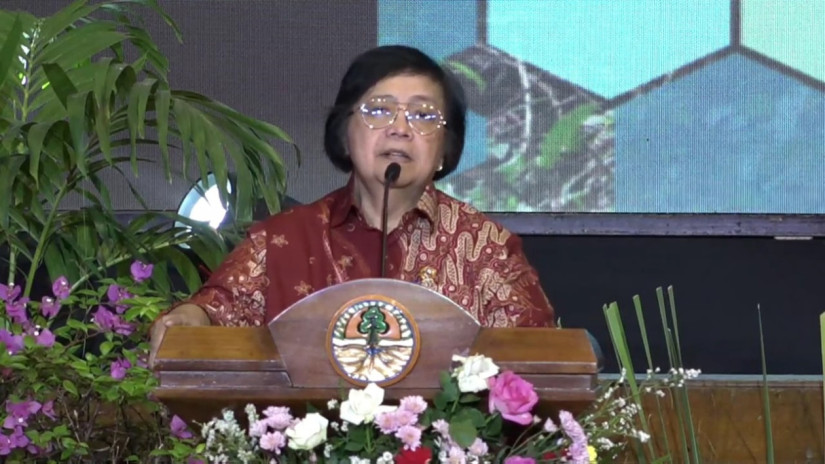
Forests are one of the assets that few other countries possess. Data from the Ministry of Environment and Forestry reports that Indonesia’s forests cover an area of 125.76 hectares, equivalent to 62.97% of the total land area of Indonesia.
This figure has experienced a decline in recent decades due to widespread exploitation and land clearing, leading to a reduction in forested areas.
In response to this issue, the ministry, in collaboration with the UGM Faculty of Forestry and universities across Indonesia, held a public lecture titled “Forestry Update Course: Indonesian Forestry and the Environment in a Global/International Perspective” on Wednesday (October 4).
“The dynamic developments in the latest forestry policies, regulations, and management practices are essential for the broader community to understand, especially by academics,” said Dr. Sigit Sunarta, Dean of the Faculty of Forestry.
“The forestry sector plays a vital role in achieving a reduction of 140 million tons of CO2 equivalent greenhouse gas emissions by 2030, implemented through various structured approaches.”
The event, which invited experts and students from around the country, is an implementation of the Minister of Environment and Forestry’s Decree Number 168/MENLHK/PKTL/PLA.1/2/2022 regarding Indonesia’s Forestry and Other Land Use (FOLU) Net Sink 2030.
This aligns with Indonesia’s target to reduce carbon emissions and seek solutions to climate change.
“Through the Kampus Merdeka program, we strive to provide students with access to up-to-date information from the forestry world,” said the dean.
“To achieve this, we have developed FOCU (Forestry Update Course), which offers lectures on current issues, policies, and practices for students across Indonesia.”
This course is open to forestry students and involves speakers and experts from various sectors.
Minister of Environment and Forestry, Professor Siti Nurbaya Bakar, stated that the problems related to forests in Indonesia are complex.
“It is clearly stated in our law that the state owns land, water, and natural resources and should be utilized to the fullest extent for the prosperity of the people. So, when one party owns these areas, can it bring prosperity to the people?” Minister Bakar said.
“The law also mentions sustainability and environmental awareness, which is not commonly found in other countries’ constitutions.”
The issues related to forestry cannot be solved with a single solution. Indonesia’s landscape is fundamentally forest-based, and there must be an element of sustainable responsibility when there is any use or utilization.
“When we build now, we are very much concerned with carrying capacity or land’s ability to support. If there is a problem, we check what has been disrupted. Is it the regulatory function, the carrier, production, or information? So, we must look at the solution for what has been disrupted,” the minister explained.
“Previously, we saw forests only as land used for commodities, measuring their area and estimating the commodity prices. But now, it’s different. The context of forests is closely related to other sectors.”
Forests contribute to 30% of the Earth’s oxygen. If forested areas decrease due to deforestation and forest cover diminishes, it will hinder CO2 absorption and oxygen production. Meanwhile, industrial areas continuously produce CO2, increasing carbon emissions.
If left unaddressed, this situation could lead to gaps in the atmosphere and potentially invite greater threats in the future. Hence, cooperation across various sectors is needed to enhance awareness and ensure the sustainability of forests.
Author: Tasya

